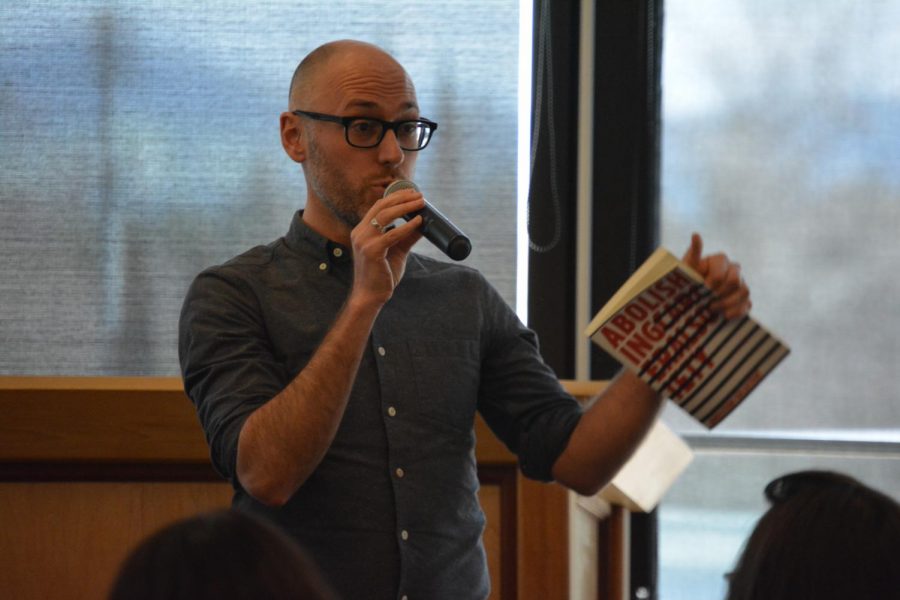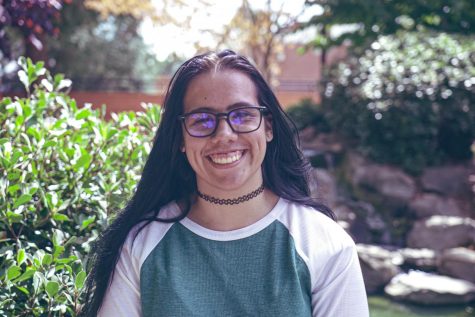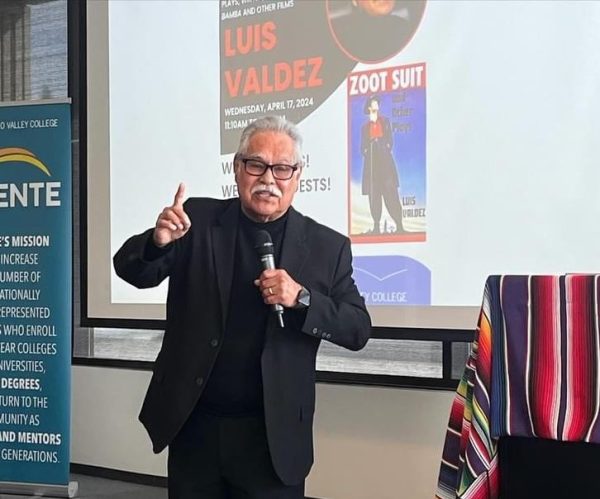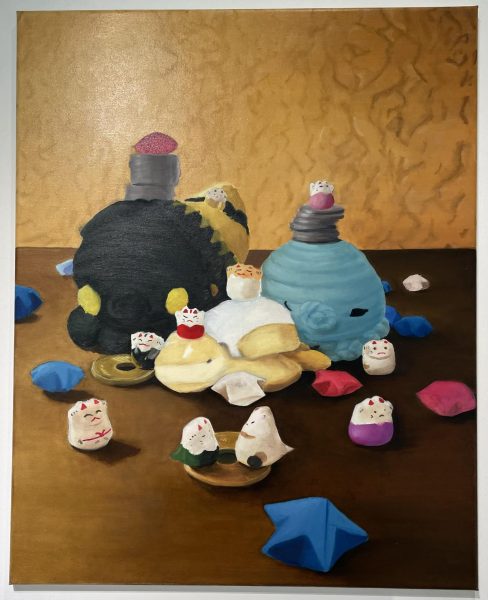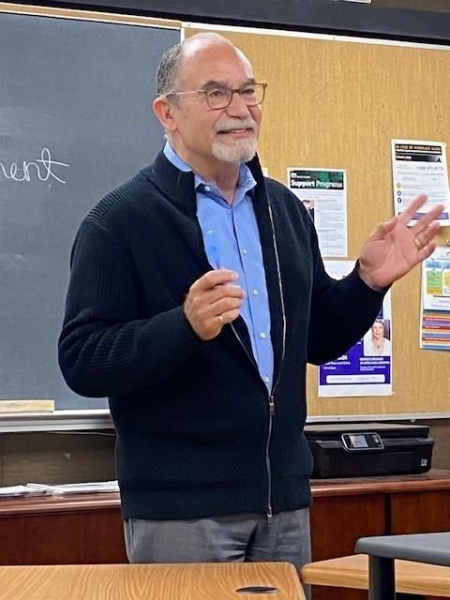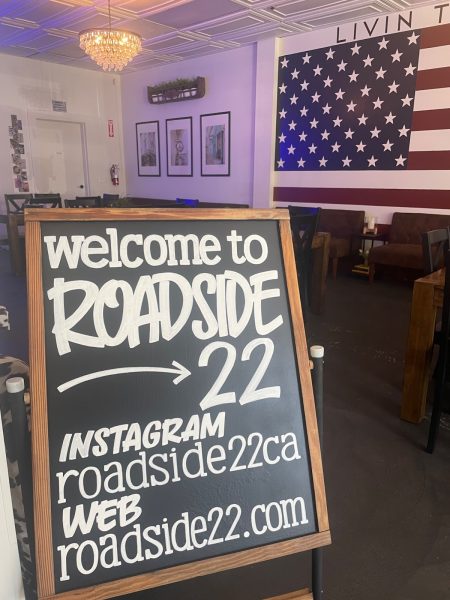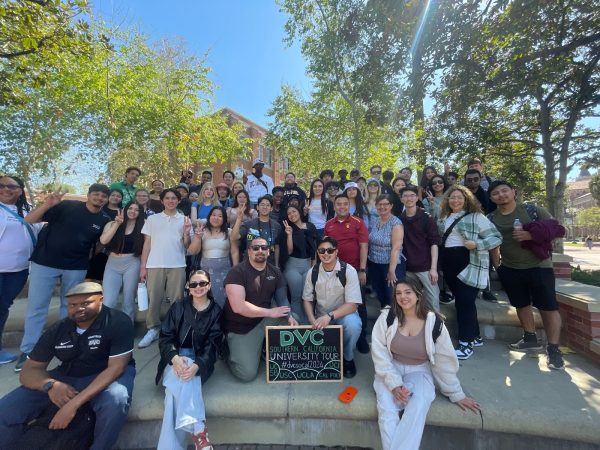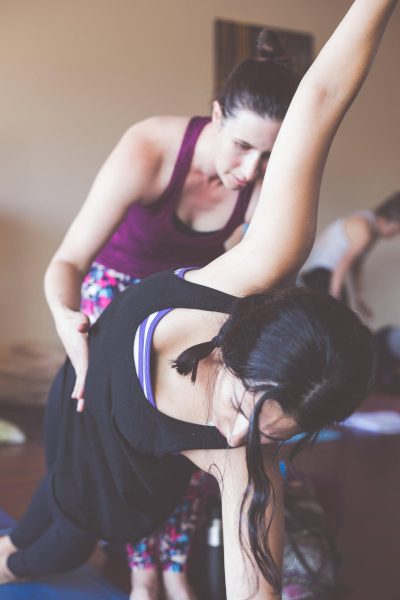“What is Abolition Today?” sparks dialog about U.S. incarceration
(Samantha Laurey/The Inquirer).
Dr. Andrew Dilts discusses how abolition plays into the fight against incarceration on Feb.28 in the Diablo Room. (Samantha Laurey/The Inquirer).
March 1, 2019
When one thinks about the word: abolition, they might think of a time of think of slavery, a practice that ended in the United States over 100 years ago, however, according to Brooke Lober and Andrew Dilts, abolition lives on today with the fight against the United States’ incarceration system. Lober and Dilts were both invited to the Pleasant Hill campus at Diablo Valley College on behalf of the social justice program on Feb. 28, where they both hosted a presentation about modern abolition.
Lober is an adjunct professor from Sonoma State who focuses not only on abolition but also on women and gender studies. She spoke of the days of Angela Davis who is a prominent social activist who was incarcerated for 18 months in connection with the Soledad Brothers case. Davis now does work with an organization known as Critical Resistance, an organization Lober focused her presentation on.
According to their mission statement online, Critical Resistance aims to “build an international movement to end the Prison Industrial Complex by challenging the belief that caging and controlling people makes us safe.”
Lober also discussed Joan Little, who was put on trial in 1974 for killing a white prison guard in force to resist sexual assault. Little’s case is one still discussed today, not only in anti-death penalty movements but in the fight against abolition.
“These are the social movements that preview what abolition looks like now,” said Lober.
The amount of incarcerated individuals in the United States has drastically increased since former President Richard Nixon’s declared war on drugs in 1971 and has continued to spike since then. This number skyrocketed after the Sentencing Reform Act which aimed to consistently incarcerate more individuals in the United States federal sentencing system. According to The Sentencing Project, “since its official beginning in the 1980s, the number of Americans incarcerated for drug offenses has skyrocketed from 40,900 in 1980 to 450,345 in 2016.”
Lober also emphasized that the number of females incarcerated has increased significantly. The Prison Policy Initiative states that more than 60 percent of women in jail have not been or have yet to face conviction as many are caregivers for children. The Initiative also explains that over half of all “women in U.S. prisons – and 80 percent of women in jail – are mothers.”
The Initiative also found that “an estimated 9,000 women are pregnant upon arrival to prison or jail each year. Yet most of these women are incarcerated for non-violent offenses, and many are held in jail awaiting trial because they can’t afford bail.”
Lober stressed that an increasing number of women being incarcerated in concerning and needs to be addressed when discussing abolition against the prison system.
“Women are the growing population,” said Lober “They are being incarcerated more and more.”
While some may believe that this issue is outside of the world at DVC, the opposite is true.
Two members of DVC’s own club, Scholars for Justice stood in front of a sea of audience members. Scholars for Justice is a new club at DVC focused around providing support for formerly incarcerated students or individuals impacted by the system. They meet every Tuesday from 10 a.m. to 11 am. located in the Humanities building in room 107.
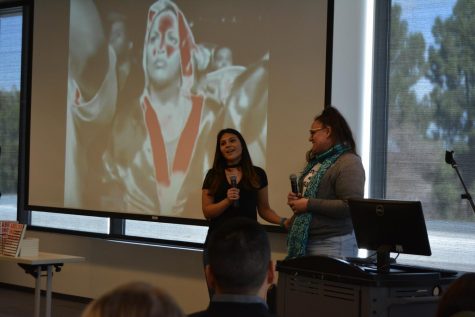
Natalie and her friend Erica opening up Scholars for Justice and what the club has done for them are formerly incarcerated students. (Samantha Laurey/The Inquirer).
“I couldn’t imagine what this club would do for me, the way you are impacted by incarceration, it gives you PTSD. They don’t tell you about that,” said Erica, a member of Scholars for Justice, who was visibly emotional and touched the support she has received. “(Being a part of this club) has made me feel safer about this journey.”
Natalie, the other affiliate from Scholars of Justice emphasized that people interested in the club aren’t forced to tell their story and can simply attend to listen and be amongst others with similar experiences.
The focus of “What is Abolition Today?” centered around a collection of interviews and statements by the incarcerated and those affected by the incarceration system put together in a book titled “Abolition: A Journal of Insurgent Politics”. This project is currently being completed by Dilts and his colleagues,
Dilts, a professor of political sciences from Loyola Marymount University in Los Angeles, he overall opened the discussion about abolition to a more broader sense when sharing the collection, According to Dilts, the full journal will be published on his website soon.
As stated in “Abolition: A Journal of Insurgent Politics” manifesto, it writes that the primary resource for the collective is for “research, publishing, and to study that encourage us to make the impossible possible, to seek transformation well beyond policy changes and toward revolutionary abolitionism. ” The journal is currently still being constructed to be passed around physically as Dilts strongly underlined the importance of having incarcerated individuals read the collection.
He also expressed the impact incarceration not only has on individuals who are convicted or who are awaiting conviction but to the individual families involved. Dilts also shared that many of the research him and his colleagues did for the journal did not consider standard academic research. He articulated that many of the ones who are outspoken are people who have been directly affected.
“In prison and in abolition, we recognize that the families of the incarcerated as experts,” said Dilts. “We are trying to amplify those voices.”
In 2018, the Initiative also found that overall, 2.3 million Americans are placed in correctional facilities with 3.7 million on probation and 840,000 on parole.
The Project dove more into this affair in 2016 with considerably stunning findings. They found the black men are six times more likely to end up in prison compared to white and Hispanic men. These disparities also stretch to not only Black youth, but to youth of color. The Project discovered that “youth of color enter the system much more frequently than white youth and are more likely to be sentenced to harsher terms of punishment.”
California is also the leading state that holds individuals with life sentences in their prison systems with 39,697 individuals serving their lifetime incarcerated. Currently, prisons are also facing issues of overcrowding as the mass incarceration rate increases. The United States is the world leader in incarceration rates, despite this Lober and Dilts both hope to abolish the system. They both believe incarceration in the United States does more damaged than rehabilitation, and with their activism, they aim to make a change.
“We’re addressing a problem that’s discrediting a solution,” said Lober. “These institutions are creating more problems.”





































































